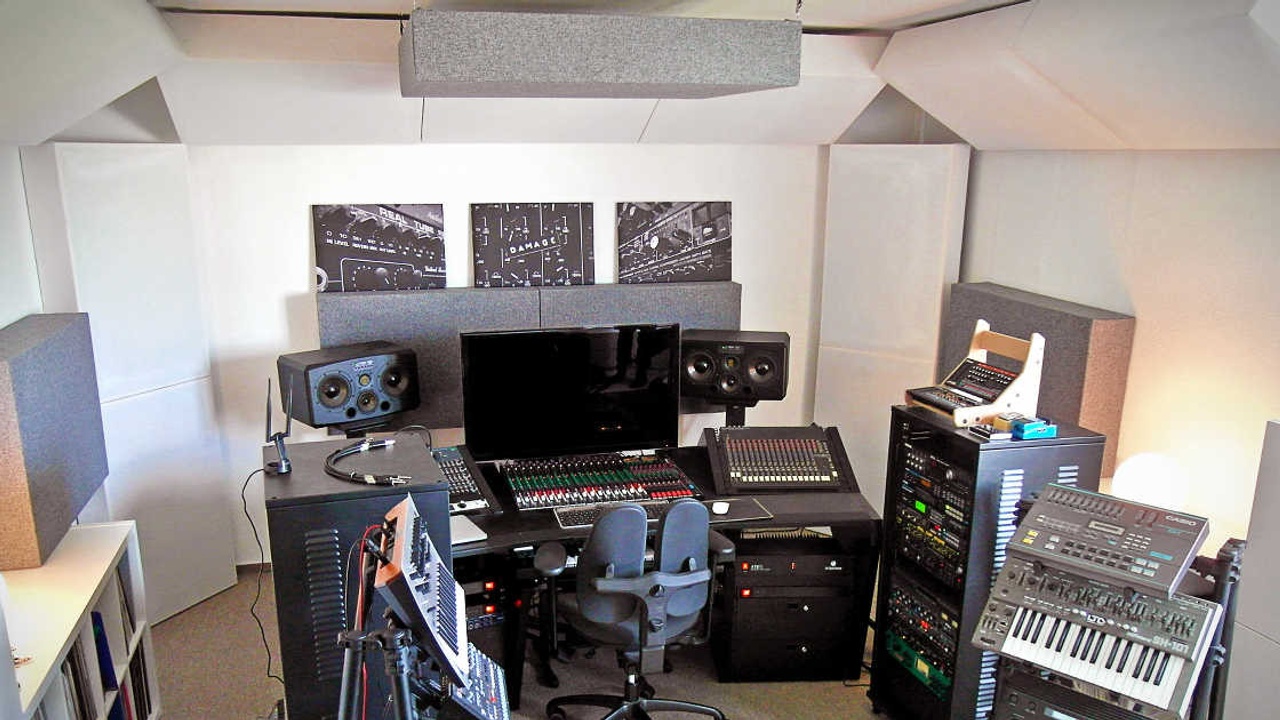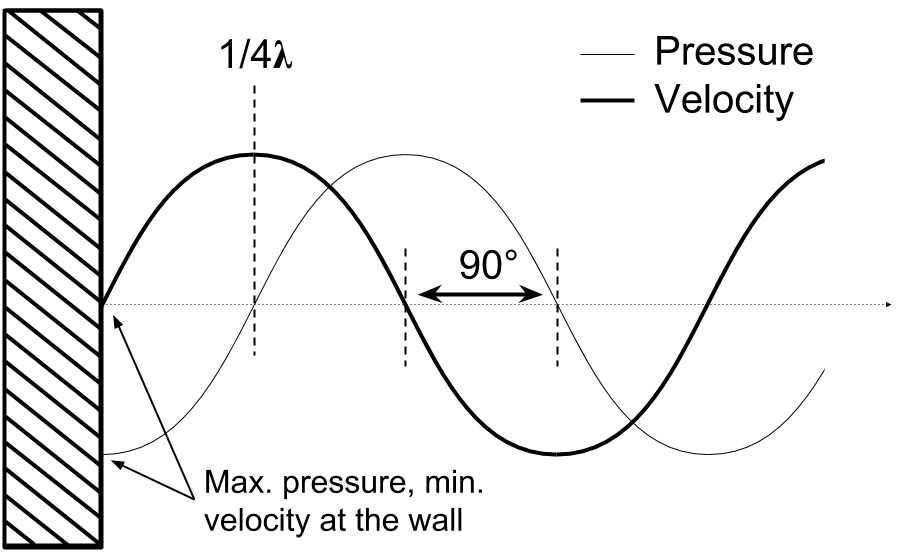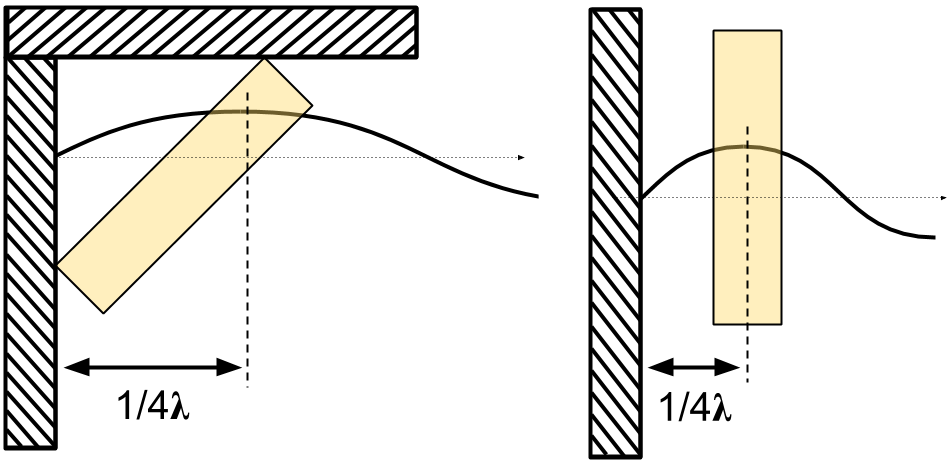
The Real Reason You Place Bass Traps In Corners (It’s Not Why You Think)
I’m sure you’ve read or heard this somewhere before:
“You need to put your bass traps in the corners because that’s where the bass energy builds up. You can hear it when you play some bass heavy music and stick your head in the corner. That’s where your bass traps need to go.”
Interestingly this couldn’t be further from the truth.
If it was true that would mean the best place for your absorber would be to stick it flat on the wall in the corner. The thinner the better, because the closer your get to the wall, the greater the bass build up.
Right?
Then why do people keep talking about air gaps behind their absorbers?
What about the 1/4 wavelength rule and making your absorber deep enough?
What Type Of Bass Trap?
The thing is:
When people talk about bass traps, they generally mean broad band absorbers built around porous insulation material like mineral wool or fiberglass.
This type of absorber works by turning the movement of air particles into heat through friction.
The air molecules literally rub against the tiny pore walls in the material as they move past them, slowing down in the process[1].
It is essentially the same effect that produces heat when you rub your hands together, or why the brakes in your car get hot.
Acousticians call the motion of air particles “particle velocity“ and consequently all types of porous absorber are velocity absorbers.
Air particle velocity is the second of two fundamental variables that we use to describe sound waves, the first being sound pressure that we are all familiar with.
The Relationship Between Pressure and Velocity
Now, air pressure and velocity have a funny relationship in a room mode (standing wave) which is what we are trying to suppress with our bass trap (Find out more about room modes and pressure and velocity here).
The place along a standing wave where pressure is highest actually has the lowest velocity. Sound pressure and sound velocity are exactly 90° out of phase[2].
And if you imagine a wall where sound pressure builds up, this means that in the same place velocity actually tends towards zero.
Places of high pressure along a wall or corner are actually the worst places to put your insulation material bass trap!
This makes intuitive sense as well. You can imagine that right up against the wall there is simply no physical space for air to move since the wall is in the way. The closer you get to the wall, the lower particle velocity gets.
 In a standing wave sound pressure is at a maximum where sound velocity is at a minimum because they are 90° out of phase.
In a standing wave sound pressure is at a maximum where sound velocity is at a minimum because they are 90° out of phase.
In fact, the best place to put your insulation material bass trap is where pressure is lowest for any particular frequency!
So, if you want to get the most out of your traps, you could start by identifying the locations along a corner where there is no pressure for the frequencies you are trying to treat, then place your insulation material bass traps there.
The Real Reason To Put Bass Traps In Corners
Of course in reality you’ll want to treat more than just one frequency with your absorber, so you’ll have to consider a wider range of frequencies for each potential location.
In consequence you’ll probably find that you’ll have to compromise at times between hitting points of low and high velocity.
Ultimately, your safest bet will still be to place your bass traps as far away from the reflecting surface as possible, to maximize the use of the 1/4 wavelength rule.
And the easiest way to do that without wasting too much usable space is to place your bass traps across your room corners.
With the panel angled in relation to the wall, you’ll be able to hit 1/4 wavelengths points of frequencies much lower than if you placed the panel over a flat surface.
 By placing a porous absorber across a corner you can maximize the use of the 1/4 wavelength rule to absorb lower frequencies.
By placing a porous absorber across a corner you can maximize the use of the 1/4 wavelength rule to absorb lower frequencies.
That is the real reason you want to place your insulation material bass traps in corners.
In practice corners are the best way to maximize the use of the 1/4 wavelength effect to absorb low frequencies with porous absorption material without wasting too much space.
What About Resonant Absorbers?
Now I need to emphasize at this point that this only applies to bass traps made from insulation material or other forms of porous material.
Resonant absorbers, on the other hand, are pressure absorbers and are best positioned in areas of high pressure. In fact they don’t work at all if you miss the high pressure point for the frequency they are tuned to.
That’s just one aspect that makes them more difficult to use in practice. And the main reason why are I highly recommend you do as much as you can with insulation material absorbers.
Resonant absorbers include:
- All forms of Helmholtz resonators like slot absorbers and perforated sheets
- Membrane absorbers, both rigid and limp mass, sealed box and free hanging
So if you’re thinking about bass trapping in your room, here are two questions I want you to answer first:
- What kind of bass trap are you going to use?
- Is it a porous insulation material trap or a resonant trap?
- Where in your room can you maximize your traps’ use for the frequencies you want to treat?
- If it’s an insulation material trap, corners will be your best bet to maximize use of the 1/4 wavelength rule. Start with points of low pressure where, in turn, velocity is maximum.
- If it’s a resonance trap you actually do need to focus on points of high pressure for any given frequency.
[1]Cox, T.J. and D’Antonio, P., 2017. Acoustic absorbers and diffusers: theory, design and application. CRC Press.
[2]Alton Everest, F. and Pohlmann, K.C., 2009. Master Handbook of Acoustics. Mc Graw Hill.